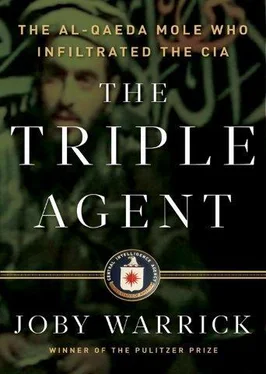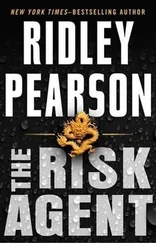“When we’re through with them they will have flies walking across their eyeballs,” Black famously said.
Bush approved, and Operation Jawbreaker was launched. Just three months later, in December 2001, the Taliban government toppled, and the remnants of the Taliban army were being pursued through southern and eastern Afghanistan. Osama bin Laden and a rump force of a few hundred loyalists attempted a last stand in the mountain fortress of Tora Bora on the Pakistani border.
Then, as Pentagon officials debated whether to send in American troops to finish the job, the terrorist leader escaped, reportedly after paying bribes to an Afghan warlord. He slipped through the lines of pro-U.S. Afghan fighters and sought refuge in Jalalabad and in villages in the eastern provinces of Kunar and Khost. He stayed briefly as a guest of Jalaluddin Haqqani, an Afghan warlord and former comrade from the civil war against the Soviets, before eventually disappearing again in the Pakistani hills.
Al-Qaeda’s No. 2 leader fled on horseback into Pakistan along a different route. In the coming years, occasional sightings of Ayman al-Zawahiri sparked furious activity and a failed attempt to capture or kill him. Bin Laden appeared only on video, his beard longer and grayer and his usual camouflage fatigues replaced by robes and an Arab-style kaffiyeh. Officially, the search for him continued, but in reality there were no clues or leads to chase.
The CIA’s Alec Station, which had been established initially to search for bin Laden, gradually lost its targeters to other units that were hunting for lesser al-Qaeda figures and Taliban warlords. In 2005 it was shut down for good.
Panetta’s new Predators would not arrive in Afghanistan until nearly the end of the year. In the meantime, the agency would send scores of new officers to the Kabul station, including some of its best targeters. One of them was Elizabeth Hanson.
The thirty-year-old chief targeter was coming off an extraordinary run, having worked on more than a dozen high-profile cases that ended in Hellfire explosions in Pakistan’s tribal belt. She had helped the CIA locate some of the biggest players in the jihadist world, from Osama al-Kini to Baitullah Mehsud. Now she was being dispatched to Afghanistan as part of a renewed push to find the biggest names of all.
She arrived in Kabul in August to a pungent stew of odors, dust, and broiling heat, her mother’s admonitions still ringing in her ears. The elder Hanson, also named Elizabeth, had been unhappy when her daughter joined the CIA, and she had been horrified by her decision to move to such a dangerous place as Afghanistan. She tried for weeks to talk her out of it and continued to fret long after it was clear that the decision was final.
“Don’t you think you should at least try to learn karate before you go over there?” the mother asked one day before the departure.
“Mom,” she replied, “if the time comes when you find that you need karate, the game is already over.”
That was typical Elizabeth—Bitsy or Monkie to her family—frustratingly stubborn, but with a wry twist that made it impossible for anyone to stay angry with her. Mrs. Hanson would have no choice but to let her daughter go, but she would insist on a call home nearly every day, and she would keep a handset strapped to her body at all hours, in case there was bad news.
The truth was, Hanson’s mother had seen this day coming for a long time. Once, as a little girl of about four years, Bitsy had plopped into her chair at the family dinner table and announced, in very mature English, that she “wanted to try everything in life, and learn everything there is to learn.” With that, she picked up a crystal goblet of ice water and bit into it so sharply that it shattered.
“The glass broke in her mouth,” her mother remembered. “But it didn’t faze her.”
Years later she joined the CIA for the same reason, prizing romance and adventure above the easy money she could have earned with her private school education and economics degree. She was a girl’s girl who adored children and appreciated nice clothes and a good manicure, yet she would leap at any chance to get her hands dirty, whether from rock climbing and bungee jumping, or from shooting grenade launchers and slogging through the mud at the CIA’s training academy. She was a self-professed nerd who read physics textbooks in her spare time, yet was so naturally funny that her friends encouraged her, quite seriously, to become a stand-up comic. The career might have pleased her mother more but for the fact that her taste in humor was, as Mrs. Hanson explained, “not very ladylike.”
Volunteering for duty in Afghanistan was in keeping with Hanson’s adventurous side, and she was thrilled at the chance to go, her friends say. There were serious risks in living even in the relatively safe Afghan capital, a place where suicide bombers occasionally rammed into military convoys and where gunmen sometimes shot their way into five-star hotels. Hanson would work and live in the CIA station inside the ultrasecure U.S. Embassy, but her job sometimes required meetings with informants outside the steel-plated gates. Hanson was again a targeter, but now she would be leading a focused effort to find and kill the top al-Qaeda and Taliban leaders who were driving the Afghan insurgency and plotting terrorist attacks against the West—including bin Laden and Zawahiri.
Her mother never pressed Hanson for details of her work, but she knew the essentials, and she never fully understood how her daughter was able to adjust mentally to work that involved the killing of other human beings, even terrorists. Sometimes she asked her daughter about it.
Elizabeth Hanson leaned to the left politically, and “she hated war,” her mother said. And yet she seemed to have no doubts about where she belonged.
“Whether you approved of the war or not made no difference,” the elder Hanson said, recalling her daughter’s words. “You don’t run away from a fight, and you always have to take care of the people who are over there, fighting your war.”
In her daughter’s words, she said, it would usually boil down to this: “It’s just what you have to do.”
Hanson quickly settled into the daily rhythm of her new job. Her living quarters consisted of a tiny dorm room with a shared bath, and there was precious little to do in the way of socializing, so she worked. Fourteen-hour days, seven-day workweeks. Dinner and lunch at her desk. Gym breaks in the afternoon. She would put in a full day before Langley was awake, and another full day while the Counterterrorism Center’s senior officers were at their desks, asking questions and demanding updates.
Hanson’s targets were closer now, just a half hour’s chopper ride to the east, hiding in the steep valleys of Kunar and Khost and in the Pakistani tribal lands beyond. Baitullah Mehsud was gone, but his Taliban minions were still there. So were the Haqqanis and the Shadow Army paramilitary troops loyal to al-Qaeda. Somewhere among the mountain villages, Sheikh Saeed al-Masri was plotting his next move, perhaps in consultation with Ayman al-Zawahiri or even Osama bin Laden himself.
If they could be found, Elizabeth Hanson would find them.
Khost, Afghanistan—September 19, 2009
At 4:58 A.M., two hours before sunrise, Jennifer Matthews was roused from sleep by a loud bang. It sounded close—it was hard to tell in the dark, and she was new to such things—and it was strong enough to rattle the picture frames in her tiny hooch. Instinctively she rolled out of bed, grabbed her flak jacket and helmet, and walked out the door toward the shelter. Rocket attack .
Читать дальше












